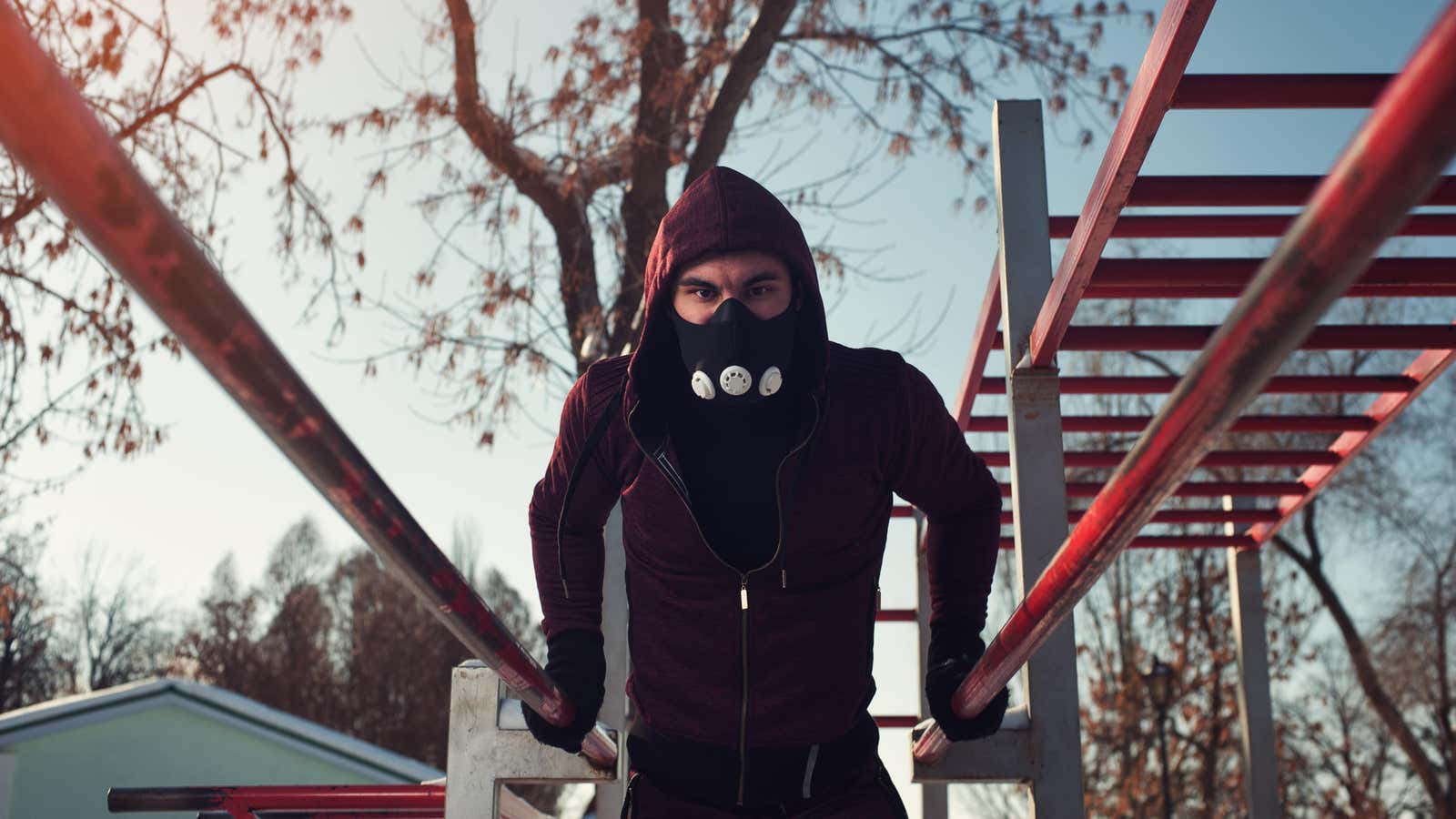Altitude Masks Are Bullshit

Thin air at high altitudes has long been recognized as a training superpower for athletes. If you live and train at altitude, you are more likely to wipe the floor with your lowland competitors. That’s why elite runners often move to a mountain town, temporarily or permanently, to adjust a bit to the altitude. Wouldn’t it be great if you could do the same without getting on a plane?
This is the idea of masks for high-altitude training. Wear it to the gym and train your body to do more work with less oxygen. Many of these masks cost between $30 and $50, though I’ve seen cheap ones on Amazon for as little as $14. It’s a lot more affordable than spending the summer in Colorado. But do they work? Unfortunately no.
Altitude training is not only training time
The benefits of training at altitude are that you live at the altitude, not train there. Even if you could teleport to Boulder every time you wanted to go for a run, you wouldn’t get those high altitude gear. Altitude “training” requires at least 12 hours of your day spent in low oxygen partial pressure air.
When the air you breathe contains less oxygen per breath than you’re used to, your body kicks into action. A hormone called erythropoietin (EPO for short) responds to this by telling your body to make more red blood cells. This does not happen if you are only short of oxygen during exercise. In fact, athletes who move to high altitude training locations often end up at a lower altitude for training. This allows them to enjoy the benefits of living at altitude while maintaining a rich supply of oxygen during exercise.
Masks don’t really simulate height
If you wear a mask while exercising, you are actually doing the opposite of what athletes do: you are breathing normal amounts of oxygen throughout the day and then limiting it to only when you need it most. You don’t get an EPO boost and you make your workouts harder for basically no reason.
There’s another reason masks don’t actually mimic altitude: limiting the amount of air you can breathe is not the same as reducing air pressure . You still get air at sea level, you just have to work harder to breathe it in. Research like this one shows that training with a mask does not improve your fitness compared to training without a mask.
How to improve your cardio
If you want to be less out of breath during exercise, you really need to improve your cardio. And the way to do that is to do a lot of cardio at different intensities.
Low-intensity cardio encourages adaptations that help your body take in and use more oxygen. High-intensity cardio (like real HIIT) pushes your body into a variety of adaptations, and training right in the middle—at a level sometimes called lactate threshold—also has its benefits. Endurance athletes combine all of these types. (We have more on the benefits of different cardio zones here .)
This means that when you do your cardio, you want to be able to get enough oxygen so that your body can do the workout you ask it to. If you’re doing weightlifting instead, your oxygen intake is even less important, as you don’t need a lot of oxygen during lifts, only to recover between those short efforts.